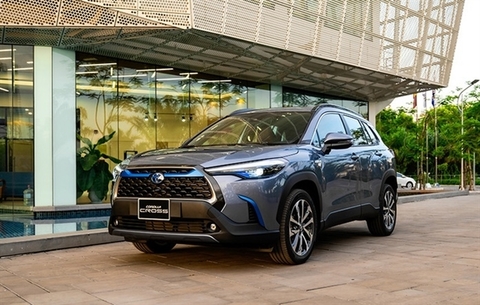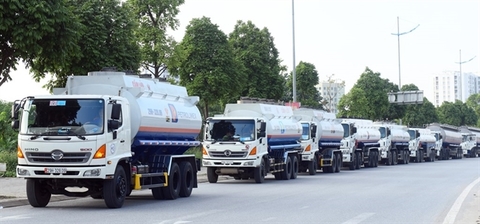Hybrid electric vehicles breathe new life into VN’s auto industry
Hybrid electric vehicles breathe new life into VN’s auto industry
Hybrid electric vehicles (HEVs) have become popular in Viet Nam as they have the advantage of not requiring on-site charging while electric vehicles (EVs) are still struggling with many barriers with charging stations, car experts said.

In Viet Nam, the first hybrid electric vehicles were available in 2009, but there remained a limited number of models, such as the Lexus RX400h, LS600hL and Mercedes-Benz S400 Hybrid.
By mid-2020, Vietnamese users started learning more about HEVs as Toyota Vietnam introduced its first affordable hybrid model, the Corolla Cross HV. The Japanese car manufacturer then launched its hybrid versions of Camry and Corolla Altis. Currently, there are 10 hybrid models in the domestic market, and it is predicted that more hybrid models will come to the local market in the near future.
Some recent entrants into the local HEV market include the Suzuki Hybrid Ertiga with a starting price of VND539 million (US$21,733) and the 2022 Nissan Kicks e-Power hybrid with prices starting at VND789 million ($31,800) to VND858 million ($34,500) imported (CBU) from Thailand.
By the end of this year, local users may also welcome the launch of the Kia Sorento Plug-In Hybrid electric vehicles (PHEV).
During the inauguration of the second Hyundai Thanh Cong Viet Nam factory in Gian Khau Industrial Park in the northern province of Ninh Binh on November 15, the company said it plans to assemble a number of new models including a hybrid version of the Hyundai Santa Fe.
Domestic users have begun shifting their focus to electric and hybrid cars, and suppliers and dealers will likely follow a similar path.
The Vietnam Automobile Manufacturers Association (VAMA) reports that the number of hybrid vehicles sold in the past two years has increased rapidly. In 2020, 546 hybrid cars were sold. In 2021, this figure increased to 2,285 units and in the first eight months of 2022, about 1,954 units were sold.
The phrase "green car" is being mentioned by Vietnamese clients, especially in the context of oil price volatility.
Frost & Sullivan analysis indicates that global electric and hybrid vehicles are slated to be the key products of global automakers from now until 2030.
Despite a market slump due to the impact of COVID-19 in 2021, EVs still reached 11.7 per cent of the total number of vehicles on the road. It is predicted that by 2025, this figure will be about 26.7 per cent, of which HEVs (hybrid without charging) alone will account for 16.2 per cent.
According to VAMA, Viet Nam is not an exception to this global trend as local automakers are making efforts to make a shift to hybrid vehicles.
Barriers still ahead
Local users' interest in EV technology is strong despite current limitations such as high cost and time-consuming battery charging. However, the lack of infrastructure is the biggest obstacle for Viet Nam.
Currently, Viet Nam does not have a widespread system of charging stations or battery exchange, so it is difficult for the electric vehicle market to develop. This is why hybrid vehicles are still the most suitable choice for Viet Nam given that hybrid vehicles do not require investment in infrastructure.




















